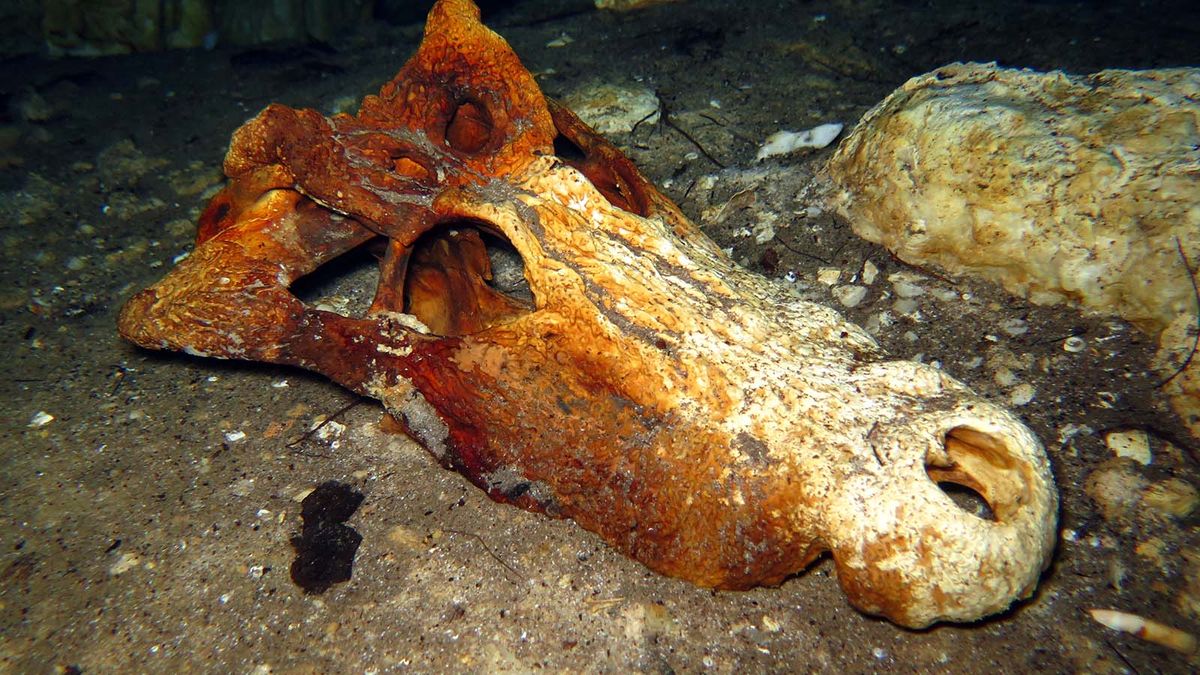World
River-bottom Bones: The Strange World of Underwater Fossil Hunting

The American alligator may be synonymous with the South, but underwater fossil-hunting is a global pastime. Outside the U.S., divers have encountered paleo-treasures in such places as Australia, Bali, Brazil, Indonesia, Mexico and the Bahamas.
Back in 2014, a bona fide “lemur graveyard” was discovered in the submerged caves of Madagascar’s Tsimanampetsotsa National Park. The big find was made possible by an international collaborative effort between anthropologists, paleontologists and scuba divers.
Hundreds of bones appeared in the underwater sediments. Some came from contemporary species like the invasive black rat. Other remains were left behind by animals that went extinct within the past few millennia.
The site quickly established itself as the world’s biggest cache of Pachylemur fossils. An ancient relative of the ruffed lemur, this creature was about twice as heavy, weighing an estimated 22 pounds (10 kilograms). It would’ve been utterly dwarfed by the gorilla-sized Mesopropithecus, a gargantuan lemur also represented in these caves.
Pygmy hippo, elephant bird and horned crocodile material was also recovered by the dive team — along with the rare, virtually complete skull of yet another bygone lemur species.
Getting access to the bounty wasn’t easy. The caves in question were likely dry at some point, but today they’re part of a flooded sinkhole. Right now, the system’s most fossil-laden cave runs 82 feet (25 meters) deep. It’s a dark environment with a complex layout, full of horizontal passageways and murky waters.
In short, this is no place for novice divers. Cave-diving in general is a high-risk sport; if you wander off-course, you can’t always ascend straight up to the surface. So to avoid getting lost, the scuba specialists on that 2014 team tracked their pathways with about 879 feet (268 meters) of safety lines.
Joe Harvey

/static.texastribune.org/media/files/f5fdb1dff4d6fd788cba66ebaefe08d0/Paxton_GOP_Convention_2018_BD_TT.jpg)






